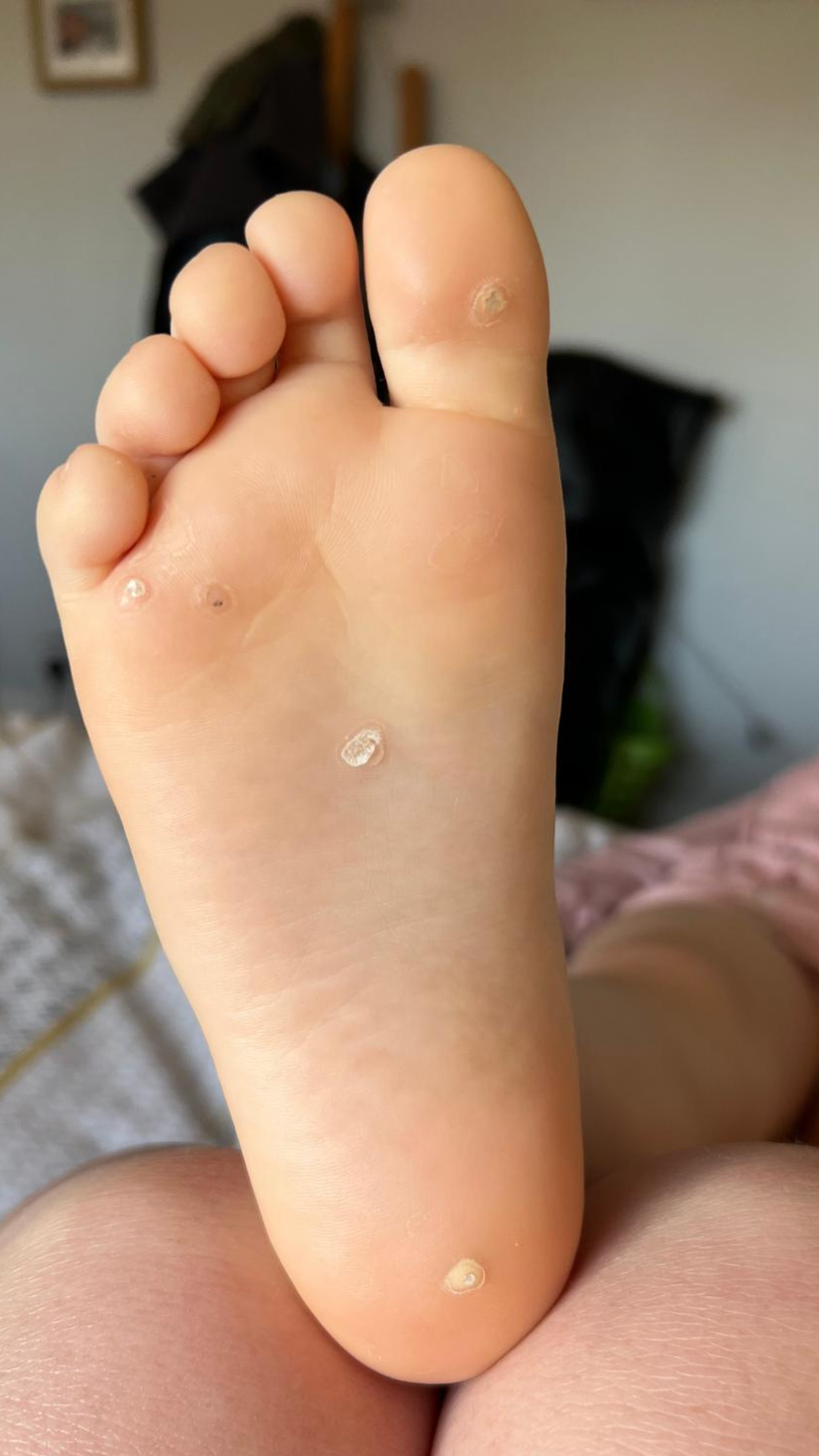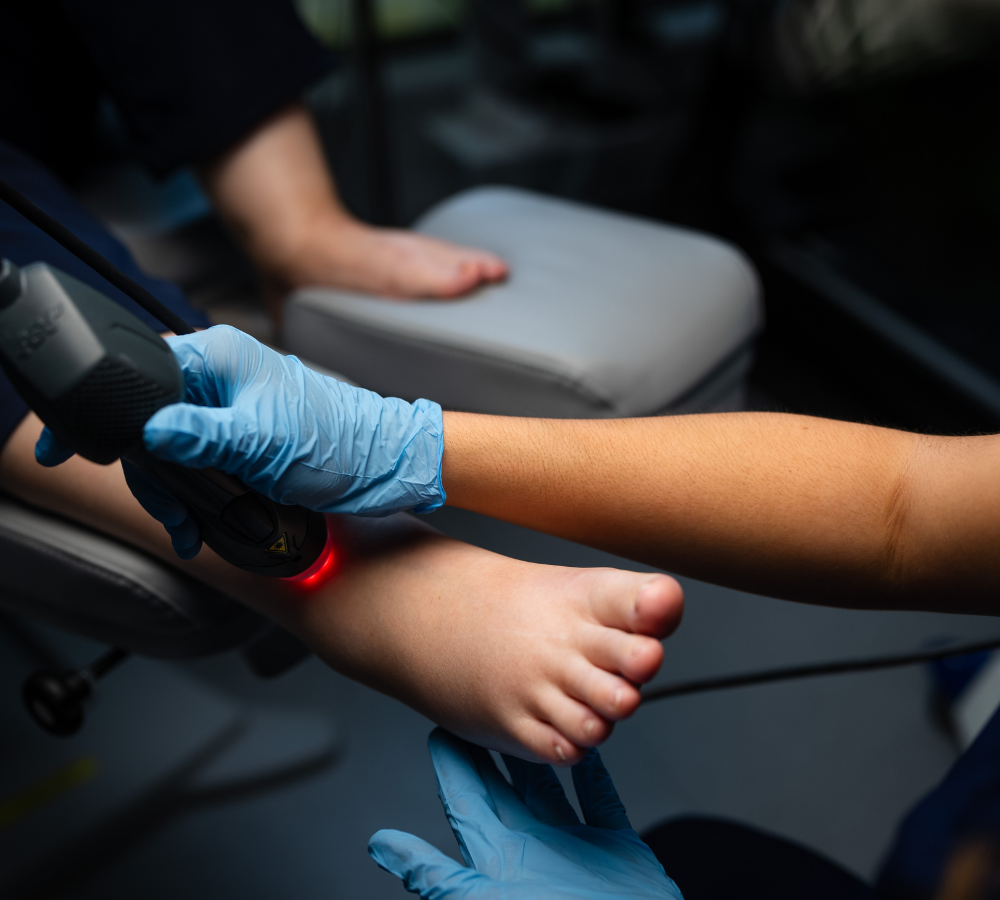(7).png)
If you’re wondering whether that sore spot on your foot is a verruca, look out for these tell-tale signs:
Not every verruca causes pain, but many people describe uncomfortable sensations such as:
 A verruca (plural: verrucae) is a type of wart that develops on the soles of the feet. Verrucas are caused by the human papilloma virus
(HPV), which infects the outer layer of the skin. When HPV enters through tiny cuts or breaks in the skin, it triggers excess skin growth,
leading to the rough, raised lesion we call a verruca.
A verruca (plural: verrucae) is a type of wart that develops on the soles of the feet. Verrucas are caused by the human papilloma virus
(HPV), which infects the outer layer of the skin. When HPV enters through tiny cuts or breaks in the skin, it triggers excess skin growth,
leading to the rough, raised lesion we call a verruca.
Because they appear on weight-bearing areas of the foot, verrucas are often pressed flat into the skin by walking or standing. This is why they can look different from warts found elsewhere on the body.
HPV thrives in warm, moist environments such as swimming pools, communal showers, changing rooms and gyms. The virus spreads easily through direct contact or indirectly via contaminated surfaces. You may pick up the virus by walking barefoot in these places.
Once contracted, verrucas can spread from one part of your foot to another, or even to other people. This is why they often appear in
clusters known as mosaic verrucae.
Verrucas are often mistaken for corns, but there are key differences:
If you’re unsure, it’s always best to get a professional diagnosis from a podiatrist.
Are verrucas and warts the same?
Yes, but not exactly. They’re related, but there’s a small difference worth knowing.
Because of their location, verrucas behave a bit differently, pressure from walking flattens them, and they often develop black dots
(clotted blood vessels) and interrupt the normal skin lines on the foot.
Some verrucas may disappear naturally over time, especially in children and teenagers, but this can take months or even years. You should consider seeking treatment if:
At our Croydon, Sydenham and Covent Garden clinics, we provide advanced verruca treatments tailored to your needs. Two of the most effective options are:
1. Verruca Needling
This procedure involves using a fine needle under local anaesthetic to push the verruca virus deeper into the skin. This stimulates the body’s immune system to recognise and fight the virus. Needling is highly effective for stubborn verrucas and usually only requires one or two sessions.
Benefits:
2. Swift® Microwave Therapy
Swift is a cutting-edge treatment that uses microwave energy to heat and destroy the virus-infected tissue. It works by stimulating your body’s immune response, much like needling, but without breaking the skin.
Benefits:
.png)
While it’s not always possible to avoid verrucas completely, there are steps you can take to reduce your risk:
Verrucas can be uncomfortable, stubborn and easy to confuse with other foot problems like corns. The key signs to look for include black dots, interrupted skin lines and tenderness when pinched from the sides. If you suspect you have a verruca, don’t ignore it, especially if it’s painful, spreading or interfering with daily life.
At our podiatry clinics in Croydon, Sydenham and Covent Garden, we offer advanced treatments such as needling and Swift® microwave therapy, designed to tackle even the most persistent verrucas. If you’re tired of dealing with discomfort or frustration, book an appointment with our expert podiatrists and take the first step towards clear, pain-free feet.

Low Level Laser Therapy helps to treat various musculoskeletal conditions, including tendonitis, plantar fasciitis, arthritis, and wound healing.
(5).png)
Discover our new aesthetic services at Dr Mirali Aesthetics at Flawless Feet Podiatry in Sydenham. Expert skin rejuvenation, Botox, dermal fillers & bespoke consultations.